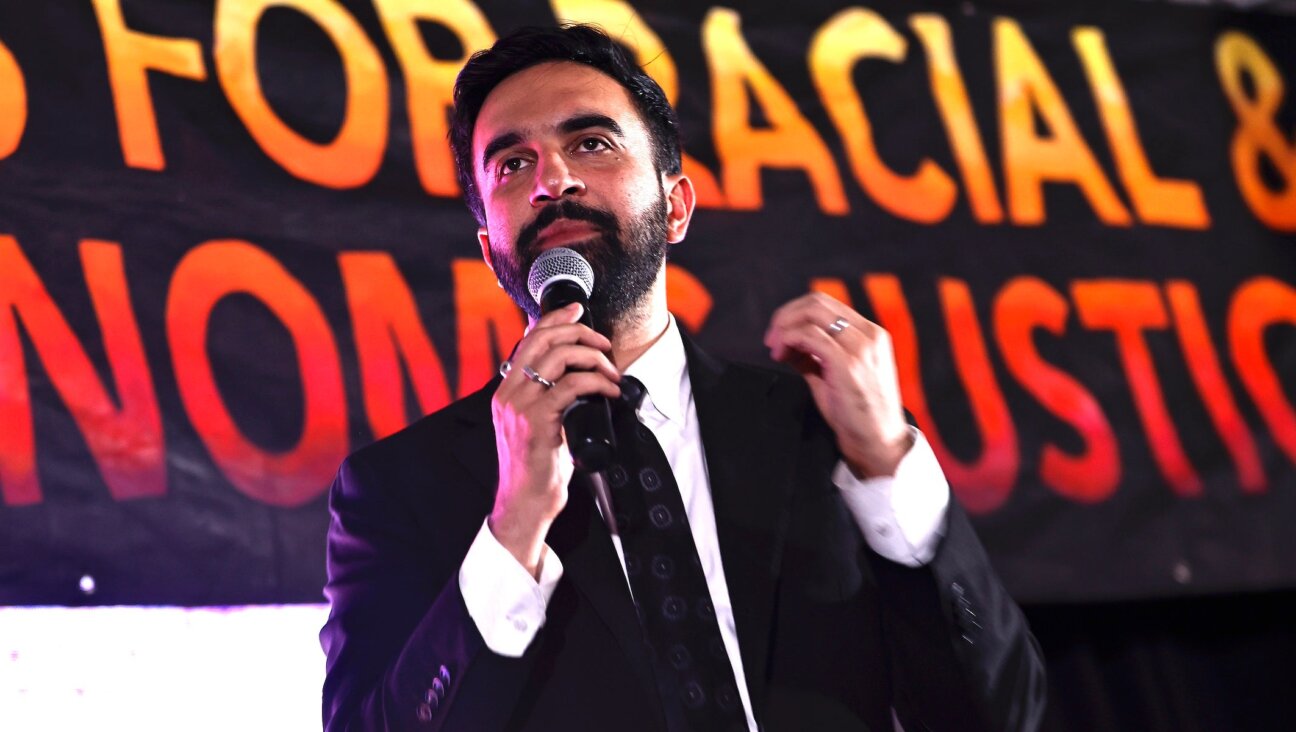Exile on Second Street
Director Chantal Akerman was back on Manhattan’s Lower East Side. She was standing in front of her audience at Anthology Film Archives, a film society so hip that there was a line of people around the block, still waiting to get into the screening of her newest movie, “La Folie Almayer,” a very loose adaptation of Joseph Conrad’s first novel, “Almayer’s Folly.” Akerman, the Belgian-born director of such films as “Jeanne Dielman, 23 Quai du Commerce, 1080 Bruxelles,” “Night and Day” and the Marcel Proust adaptation “The Captive,” doesn’t have an American theatrical distributor for “La Folie Almayer,” and she’s never been part of the cinema mainstream, but she’s a rock star at Anthology, where she’s been coming to watch films and to screen her own since she arrived in the United States in the early 1970s. Akerman, who now lives in Harlem and is on the faculty of the City College of New York, was a self-effacing presence in red pants and an untucked white blouse, a woman whose ebullient charm belies the tightly controlled and often uncompromisingly dour mood of some of her better-known films.
“I’m totally out of control. I’m totally nuts,” Akerman said. “My apartment is a mess, I’m a mess and I’m out of control. But when I make a movie, it’s totally something else.”
As she stood before the screen at Anthology to introduce her film, Akerman advised her audience not to spend too much time interpreting her movie. “You should just let go,” she said
Perhaps Akerman’s advice would be easier to follow if one were watching a film made by another director: Her recognizably languid visual style, however, comprises extremely long takes that allow the viewer more than enough time for contemplation, interpretation and most probably misinterpretation.
Akerman established her reputation with “Jeanne Dielman,” a classic, though still quite challenging, 1975 film that is now seen as a landmark of contemporary cinema. It clocks in at more than three hours, even though the majority of its screen time is taken up by the quotidian, mind-numbing chores of the titular Belgian housewife before she finally bursts into violence.
The new film, much of which was filmed in Cambodia rather than the Malaysia of Conrad’s novel, has more of a traditional plot than is often the case for Akerman’s work, and it features more exterior shots than one has come to expect from her. She says that she approached this film more instinctively than some of her others. But the silences, the sense of directorial control and the overwhelmingly claustrophobic sensation remain. And so do those slow, hypnotic tracking shots, here partly underscored by strains of Wagner’s “Tristan und Isolde.”
In those moments, it’s hard for the viewer to avoid drawing parallels between the tragic exile story of Akerman’s heroine — Nina, a mixed-race girl sent away by her father to a boarding school — and the story of the director’s own family: Akerman is a child of Polish Holocaust survivors; she was born in Brussels and partly educated in Jewish schools. Her father died in 1995, and her mother, who she says understands her work better than anybody, is still living in Belgium.
“My mother was in Auschwitz, and she never wanted to talk about the concentration camps,” Akerman told me during a conversation after the film. “I asked many times, and she would say, ‘I can’t talk about that.’ My father was not in the camps; he was hiding with his father and mother, and his sister went in Catholic convents. But on my mother’s side, many, many, many people died.”
Akerman is not religious, nor is she particularly steeped in Jewish culture, though she expresses a great fondness for Albert Londres’s book “Le Juif Errant Est Arrivé” (“The Wandering Jew Has Arrived”) and the works of Isaac Bashevis Singer, and she has more than a few choice words to say about the recent rise of anti-Semitism in Europe. Few of her films explore Jewish themes overtly — the 1989 “Histoires D’Ameriques,” which Akerman says was inspired by the Forverts advice column “A Bintel Brief,” and “Down There,” from 2006, are notable exceptions. But themes of exile and outsider status recur frequently in her work, and she acknowledges that there are resonances between her history and the lives of her characters.
“All my work is autobiographical, and at the same time, all of it is not,” Akerman said. “Exile is one of my main projects. I was born in a Jewish family that went from Poland to Belgium. There was no room for Jews there. Even in Belgium, when my father took me out of a Jewish school and put me in a secular school, I was totally feeling alienated. Even when I’m in Israel, I feel as though I’m in exile. When I went there in 1961, it was beautiful, it was idealistic, it was fantastic. It’s not the case anymore. It’s even more capitalistic than America, and then there are a lot of problems with the very religious. So where is there room for me there? Even among Jews I am in exile, because I’m not married, I don’t have children and I am a ‘bachelor’ by choice, and that’s like being in exile, because I live in a world where everybody speaks about their families. The only place I don’t feel like an exile is in New York.”
At the same time, as one discovers the parallels between Akerman’s stories and her personal account, it’s hard to refrain from finding similarities between Akerman’s film and another famous director’s Joseph Conrad adaptation, one that was also set partly in Cambodia and featured Wagner prominently on its soundtrack. I told Akerman that I was tempted to refer to “La Folie Almayer” as her postcolonial Jewish feminist response to “Apocalypse Now.” Despite its occasional outbursts of violence, Akerman’s film, unlike Francis Ford Coppola’s, refuses to indulge in macho, orgiastic displays.
“But no,” Akerman said to me. “No, no, I don’t think so. I love ‘Apocalypse Now,’ but that’s a very different Wagner he uses; his is a Nazi Wagner, mine is not. And my story is much more the story of a father and his daughter, and that is definitely not what ‘Apocalypse Now’ is about.”
Anywhere else in the world, Akerman may feel alienated. But on Second Street, after her screening, in front of the Anthology entrance, she was besieged by fans. Some offered interpretations about her work and asked for explanations.
“Oh, you must forget about the ‘why,’” she finally told them. “You must let go. If you know why you do something, then why should you do it? You have to discover it. To make something is the process of discovering. And if it’s not a process of discovery, then you don’t have to do it.”
Certainly that’s sound advice for Akerman’s students and Lower East Side filmmakers in general, as they are plentiful here, and also for artists such as herself. But for critics and audiences watching films as provocative and open to interpretation as Akerman’s, we’ll most probably keep grasping and trying and searching her biography to find the why’s — whether she wants us to or not.
Adam Langer is the Forward’s arts and culture editor.
















